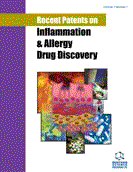Abstract
The recently emerged Vcsa1 gene is one member of the variable coding sequence (VCS) multigene family of Rattus norvegicus. This gene encodes the precursor prohormone SMR1 (submandibular rat-1), which on enzymatic processing gives rise to several 5 to 11 amino acid peptides that modulate a variety of physiological functions. The analgesic pentapeptide sialorphin and anti-inflammatory heptapeptide submandibular gland peptide-T (TDIFEGG) are the most intensively studied. Although the Vcsa1 gene and its protein product are unique to rats, TDIFEGG or a derivative acts on all species examined to date, including human cells, in functions related to allergic reactions and inflammation. In this review, the patent and academic literature on SMR1 and its natural peptides and their derivatives are reviewed for consideration of biological targets and relevance to the development of novel therapeutic agents. The VCS gene family is discussed and we speculate on possible human homologs of these potent anti-inflammatory rat-derived peptides. The biologically active peptide products of SMR1 are considered and the mechanism of action and structure-activity relationships of the anti-inflammatory submandibular gland peptide-T and its derivatives are discussed.
Keywords: salivary glands, variable coding sequence multigene family, prohormone, peptides, inflammation, allergy, asthma, endotoxemia, neutrophils, leukocytes
 6
6


















